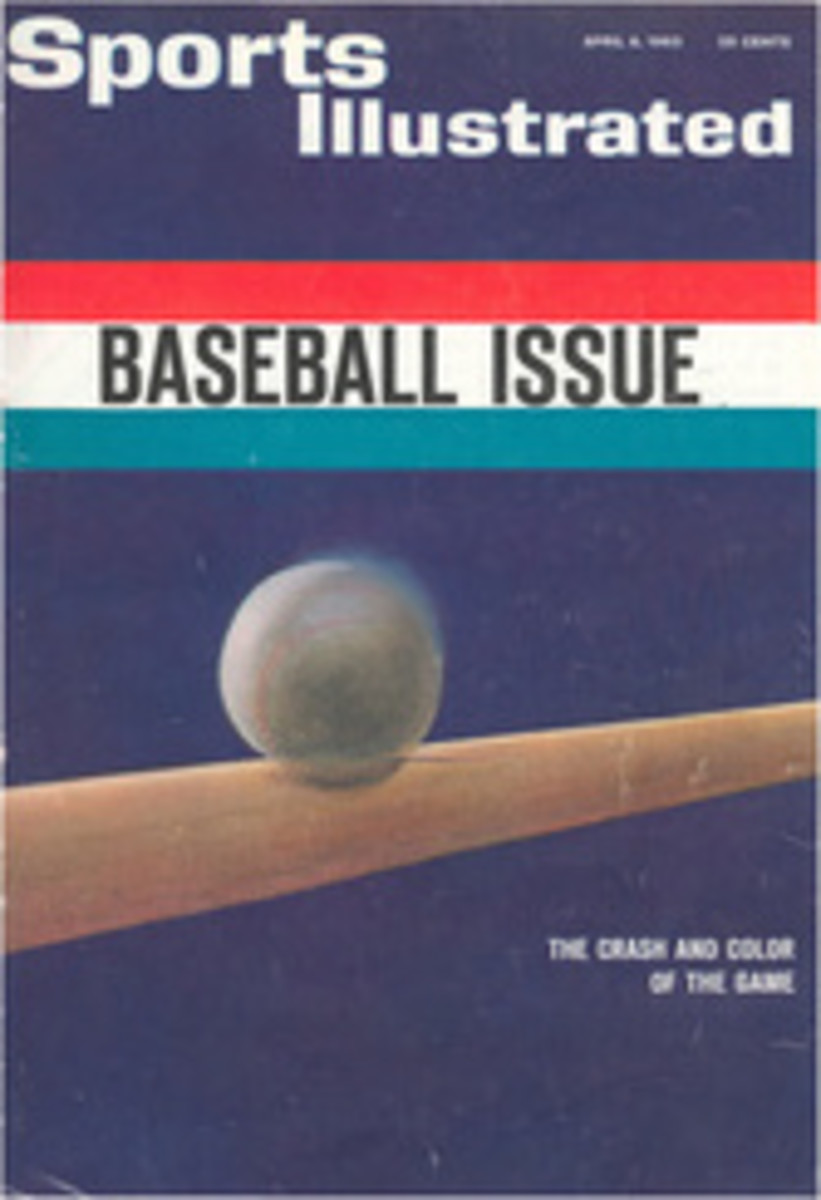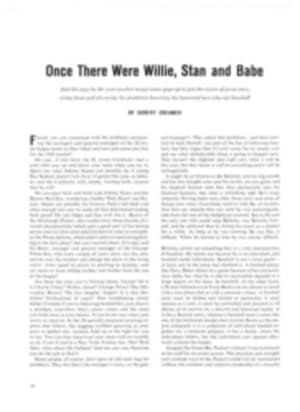
Flight to Oblivion
"The morning of April 16, 1912 was still and cold in England. Thick, black clouds floated low overhead. At a narrow airfield a few miles from Dover a 28-year-old American woman named Harriet Quimby bundled herself into a long, gray wool overcoat, a raincoat and a heavy sealskin stole. She pulled on a pair of thick gray gloves and climbed nimbly into the cockpit of a frail monoplane. The few onlookers watched with foreboding as the tiny plane disappeared in the murk—Miss Quimby was attempting a feat as daring in its day as the invasion of space half a century later.
An editor of Leslie's Illustrated Weekly, Harriet Quimby had learned to fly in 10 minutes only the year before. With a month's practice behind her, she had defied all the conventions of the times and applied for a pilot's license. On August 1, 1911, after long and heated debate over "setting a precedent by granting a pilot's license to a woman," the Aero Club of America awarded her license No. 37.
"Miss Quimby," said a newspaper account, "passed all tests brilliantly, including altitude and the difficult one of cutting figures of eight. One would never suspect to see her, or hear her talk, that she would manipulate an aeroplane or go into the air alone. But she is absolutely fearless in a flying machine."
Immediately after she became America's first aviatrix, Miss Quimby toured the United States and Mexico in a series of exhibition flights.
"Flying is just the sport for women," she said. "It's splendid for the complexion, and all that fresh air must be good for anybody!"
Her flying costume, consisting of purple satin knickerbockers, blouse and hood, was very becoming to her trim figure and pert, dark-eyed beauty. With it she wore high laced boots and, around her neck on an antique silver chain, a tiny East Indian idol that was her flying talisman.
She was obviously quite a great attraction, but with other women following her lead in flying, the novelty started to wear off. Harriet decided on a flight that would command headlines and if successful make her undisputed Queen of the Air. She would fly the English Channel—a flight no woman had yet dared. (The Channel had been crossed the first time only three years earlier.)
Keeping her plans secret, Harriet sailed to England in March, 1912. There she persuaded the London Daily Mirror to back her flight. Louis Blériot agreed to lend her a 50-hp monoplane, a type Harriet had never flown. Concerned only with being the first woman to fly the English Channel, she brushed aside his suggestion of a trial flight.
The feminine touch
Harriet was at the flying field before dawn on April 16. A mauve silk motor veil, wound loosely round her cap, floated out behind her as she moved. "I wear that to show I'm a woman if people see me flying up high," she said.
Gustave Hamel, the English aviator, made a quick flight to try out the engine. He reported it perfect but said the clouds were so low that Miss Quimby must fly by compass. Harriet announced that she had never used a compass and saw no reason to do so.
The horrified Hamel pointed out that drifting only five miles off course would mean being lost over the North Sea. He set the compass for southeast and explained its use at such length that Harriet finally broke in. "I don't care what happens! I'm going right now!"
The propeller was started and the flimsy machine sped down the runway. It rose higher and higher, passing through several cloud banks. Harriet's veil streamed out behind her. In seven minutes and 10 seconds she was lost to sight in the thick clouds. Her later account said: "I climbed steadily in a long circle. Within 30 seconds I was up about 1,500 feet. I made directly for the flagstaff of Dover Castle as I had promised the Mirror photographers.
"In an instant I was beyond the cliffs and over the Channel. Far below the Mirror's tug, streaming black smoke, tried to keep ahead of me. I passed it in a jiffy. Then the thickening fog obscured my view.
"I could not see in any direction. I pushed up my wet goggles and watched the compass. I was flying over a mile a minute. I soon felt sure that land must be in sight if I were only below the fog. But I could not see the water below, and a blind descent might mean a plunge into the surging Channel.
"Suddenly the roar of the engine faltered into a coughing splutter. I depressed my steering planes and dropped about a thousand feet. As the sunlight struck my eyes, the engine took hold again. Close ahead I saw the white shores of France, but I could not find Calais. The rising wind came in billowy gusts. I knew I must land. I glided down, making an easy landing on the beach near Hardelot."
Harriet Quimby had made the first flight across the English Channel by a woman. But the headlines and fame that she had counted on never materialized. Late on the night of April 14, 1912 the Titanic smashed into an iceberg and sank. In those pre-radio and-television days, news traveled slowly. It is unlikely that more than the first garbled and sketchy reports of the disaster reached the remote aerodrome outside Dover during the 29 or 30 hours which elapsed between the sinking and Harriet's 5 a.m. take-off on the 16th.
It is doubtful whether Harriet, tensely watching the weather and keeping herself hidden so that news of her flight would not leak out, realized the full significance of the tragedy in relation to her hoped-for headlines, or if she knew about it at all.
Whether she knew of it or not, the Titanic's tragic end meant that Harriet's amazing feat won little recognition in the world's newspapers. For days every bit of news about the Titanic was printed in bold type. There was no room for sports. Even the Mirror story on Harriet was pushed back to page five.
Without the initial burst of publicity which might have made her name a household word, Harriet's affairs did not work out as she had hoped. Expected contracts did not materialize; others were broken; she became involved in lawsuits, troublesome and unrewarding.
Three months after her flight Miss Quimby was scheduled to be the star of the Boston Aviation Meet held in Squantum, Mass. The major event was to be Harriet's 10-mile flight to Boston Light and return, with William Willard, manager of the meet, as her passenger.
It was almost sunset on July 1, 1912 when Willard stepped into the passenger seat behind Harriet. "The aeroplane, painted pure white," said The Boston Globe, "sped across the infield like some frightened thing until, taking a little jump, it lifted itself and its passengers into the air. Twenty minutes later a mere speck appeared out of the haze at a height of 5,000 feet. Nobody had ever flown to the Light at that height."
The Globe continued: "In descending Miss Quimby circled the field and started a volplane. As the great white wings dipped toward the earth there was a sudden, upward flash of the tail. Outlined against the red light of the sunset, a dark object was seen to drop out of the machine, rapidly followed by another. A cry of horror, that told of a sudden and awful realization, went up from the spectators. 'My God, they're killed!' came from hundreds of throats.
"Free of a guiding hand the aeroplane glided gracefully across the red and purple sky, making such a beautiful curve that the awfulness of death was for the moment blotted from the minds of the watchers. Then it, too, struck the water."
It is ironical that even Harriet's last, dramatic flight had little publicity. Again the unexpected, the nomination of Woodrow Wilson as the Democratic presidential candidate, pre-empted headlines and news space. Soon America's first aviatrix was virtually forgotten.
But Harriet Quimby, the lighthearted, feminine pioneer, might have felt that the brief obituary in the Boston Post was accolade enough: "Harriet Quimby, ambitious to be among the pathfinders, asked no handicap on account of her sex. She took her chances like a man and died like one."
PHOTO
MISS QUIMBY'S flying costume was becoming to her trim figure.

